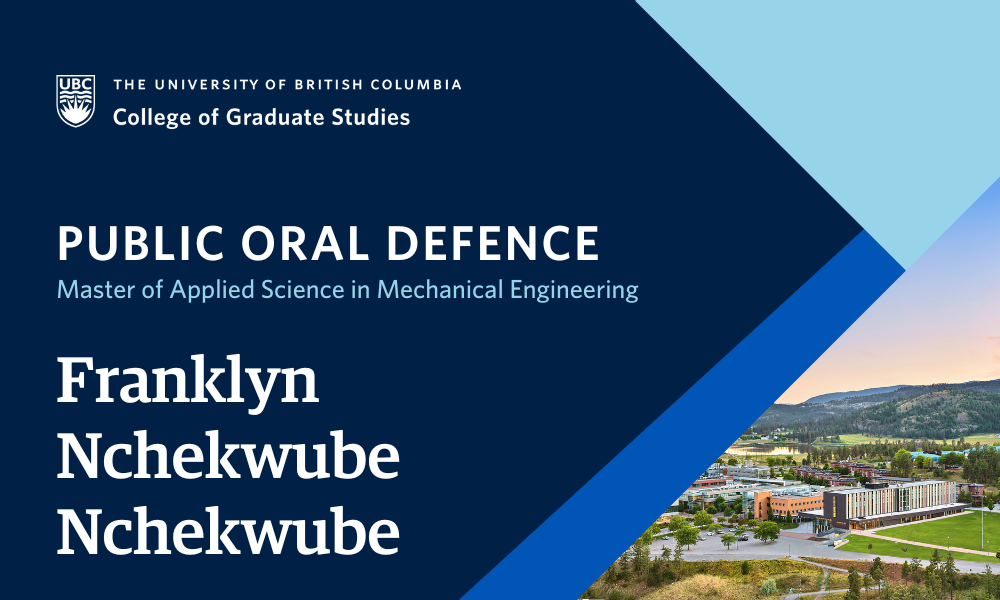
Thesis Defence: Graphitization of Recovered Carbon Black and N660 Carbon Black via Spark Plasma Sintering: A Comparative Analysis
April 28 at 9:00 am - 1:00 pm

Franklyn Nchekwube Nchekwube, supervised by Dr. Lukas Bichler, will defend their thesis titled “Graphitization of Recovered Carbon Black and N660 Carbon Black via Spark Plasma Sintering: A Comparative Analysis” in partial fulfillment of the requirements for the degree of Master of Applied Science in Mechanical Engineering.
An abstract for Franklyn Nchekwube Nchekwube’s thesis is included below.
Defences are open to all members of the campus community as well as the general public. Registration is not required for in-person defences.
Abstract
Graphite is a critical material for the energy storage industry, obtained naturally through mining or synthetically via graphitization, a process involving the heat treatment of high-carbon content materials, typically petroleum coke and coal tar. However, both methods have drawbacks: mining disrupts and pollutes communities and the environment, while synthetic graphite production is highly energy-intensive due to the need for high temperatures and long graphitization times. These disadvantages have led to the need for alternative routes to graphite production. Carbon black, an amorphous carbon (>90% carbon), has been explored as a precursor for graphite production. Tires, composed mainly of rubber and carbon black, resist physical and chemical processing but can be pyrolyzed to recover carbon black for graphitization.
The spark plasma sintering (SPS) machine has been used to graphitize various carbon-based materials at lower temperatures. This research compares the SPS-based graphitization of recovered carbon black (rCB) from end-of-life tires with virgin (vCB) N660 carbon black. The rCB was jet milled to 1.5 μm to enhance particle interactions, while the as-received vCB remained in a pelletized form (1000 μm) with individual particle sizes of 70 nm. A 2³ factorial design of experiments was applied within the SPS limits (Temperature: 1600 °C and 1800°C, Pressure: 40 MPa and 60 MPa, Time: 10 and 30 minutes) to examine the effects of process parameters on graphitization. After sintering, both precursors exhibited reduced disorder, decreased interplanar spacing, increased crystallite size, and lower impurity concentrations. For jet-milled rCB, temperature, pressure, and time significantly influenced graphitization, with higher temperatures and longer times resulting in a greater degree of graphitization. Pressure effects varied depending on the combinations of temperature and time. For as-received vCB, temperature and time had a positive influence on graphitization, whereas higher pressure hindered it. The best jet-milled rCB and as-received vCB sintered samples had similar interplanar spacing (0.344nm) and ID/IG values. The study concludes that SPS successfully graphitized both precursors to a certain degree, as evidenced by the structural transformations that occurred post-sintering.